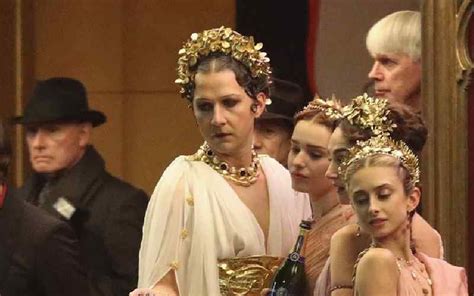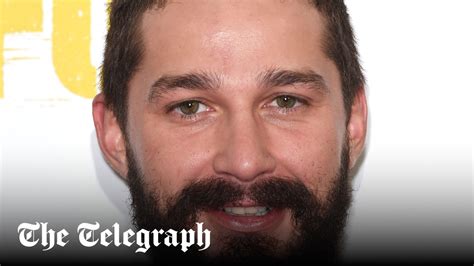
Shia LaBeouf’s dramatically altered appearance has sparked widespread reactions after the actor was photographed in Los Angeles sporting a shaved head and significantly thinner frame. The transformation has left fans and observers speculating about the reasons behind the change, given LaBeouf’s history of method acting and his more recent embrace of a quieter, more private life.
LaBeouf, 38, was spotted in LA this week looking almost unrecognizable from his previous public appearances. The actor, typically known for his varied hairstyles and fluctuating weight, was seen with a completely shaved head and a noticeably slimmer physique. This stark contrast to his past images has ignited curiosity and concern among his followers and media outlets.
“Shia LaBeouf, 38, looks unrecognizable with a shaved head and thin frame in new photos taken in Los Angeles,” Yahoo Entertainment reported. The photos quickly circulated on social media platforms, triggering discussions and conjecture about the motivation for his radical transformation.
LaBeouf’s career has been marked by periods of intense public scrutiny, often intertwined with his dedication to method acting. He has previously undergone significant physical changes for roles, including extreme weight gain for “Man Down” (2015) and tooth removal for “Fury” (2014). However, in recent years, LaBeouf has stepped away from the limelight to focus on personal growth and family life, making his sudden transformation even more perplexing.
The actor’s commitment to his craft is well-documented. For the 2012 film “Lawless,” he reportedly lived in the woods and drank moonshine to better understand his character. Similarly, for “Fury,” he not only removed a tooth but also refused to shower for the duration of filming to embody the gritty realism of a World War II soldier. These instances highlight LaBeouf’s willingness to immerse himself fully in his roles, often pushing the boundaries of conventional acting.
However, LaBeouf’s journey has not been without its challenges. He has faced legal issues and personal struggles that have been extensively covered by the media. In recent years, he has appeared to be actively working on self-improvement, including seeking therapy and addressing past behaviors. This effort towards personal growth makes his recent transformation even more intriguing, as it could signify a new approach to his career or a deeper reflection of his inner state.
The reasons for LaBeouf’s physical change remain speculative. Some suggest it might be for an upcoming role, while others believe it reflects a personal choice or a response to ongoing personal challenges. Without official confirmation from LaBeouf or his representatives, the public is left to interpret the transformation based on his past behaviors and public statements.
The transformation also underscores the intense scrutiny celebrities face regarding their appearance. LaBeouf’s case is a stark reminder of how much attention is paid to the physical changes of public figures and the assumptions that often accompany these changes. The media and public often speculate about the underlying reasons, ranging from health concerns to professional demands, highlighting the pressures of fame and the loss of privacy that comes with it.
Furthermore, LaBeouf’s situation prompts a broader discussion about the ethics of method acting. While some laud it as a profound dedication to the craft, others criticize it as potentially harmful and self-destructive. The extent to which actors should go to embody their characters remains a subject of debate within the industry and among audiences. LaBeouf’s past extremes have certainly fueled this discussion, making his current transformation all the more relevant.
The absence of clear information surrounding LaBeouf’s transformation only adds to the intrigue. In an era of constant updates and oversharing, the silence from LaBeouf and his representatives stands out. This lack of transparency invites speculation but also respects his privacy, allowing him to navigate his personal and professional life without undue interference. It reflects a growing trend among some celebrities to control their narrative and limit their exposure, particularly when dealing with sensitive or personal matters.
LaBeouf’s dedication to his roles has earned him critical acclaim and a devoted following. His willingness to take risks and push boundaries has set him apart from many of his contemporaries. However, this same dedication has also led to controversy and challenges. Understanding his history and the context of his career is essential to interpreting his current transformation. Whether it is for a role, a personal choice, or a combination of both, it reflects a complex and multifaceted individual who continues to fascinate and intrigue.
The focus on LaBeouf’s appearance also brings attention to broader societal issues regarding body image and expectations. Celebrities are often held to unrealistic standards, and their physical changes are scrutinized and judged. This can have a ripple effect, influencing how individuals perceive themselves and others. The pressure to conform to certain ideals can be particularly intense for those in the public eye, highlighting the need for more empathy and understanding in how we view and discuss celebrities’ appearances.
In conclusion, Shia LaBeouf’s recent transformation has sparked widespread interest and speculation due to his history of extreme method acting, his recent focus on personal growth, and the intense scrutiny celebrities face. Without official confirmation, the reasons for his shaved head and thinner frame remain unknown, leaving the public to interpret the changes based on his past behaviors and the broader context of his career and personal life. The situation underscores the complexities of fame, the ethics of method acting, and the pressures associated with body image in the public eye.
Expanded Context and Analysis:
Shia LaBeouf’s career trajectory has been anything but predictable. Rising to fame as a child actor on the Disney Channel’s “Even Stevens,” he successfully transitioned into more mature roles, showcasing his versatility and commitment to his craft. His breakthrough came with the “Transformers” franchise, which catapulted him to international stardom. However, LaBeouf has consistently sought out challenging and unconventional roles, often working with acclaimed directors and pushing the boundaries of his acting abilities.
His dedication to method acting has been a defining characteristic of his career. He has demonstrated a willingness to immerse himself completely in his characters, often at considerable personal cost. This commitment has earned him critical praise but has also contributed to periods of instability and public scrutiny.
For instance, his role in Lars von Trier’s “Nymphomaniac” (2013) involved intense emotional and physical preparation. He reportedly sent explicit tapes to the director to demonstrate his commitment to the role, a decision that generated considerable controversy. Similarly, his role in the war film “Fury” required him to spend weeks without showering and even pull out a tooth to better embody the character of a hardened soldier.
LaBeouf’s personal struggles have been well-documented by the media. He has faced legal issues, including arrests for disorderly conduct and public intoxication. These incidents have often overshadowed his professional achievements and have led to concerns about his well-being. In response, LaBeouf has publicly acknowledged his struggles and has sought treatment for addiction and mental health issues.
In recent years, LaBeouf has appeared to be actively working on personal growth and self-improvement. He has spoken openly about his past mistakes and has expressed a desire to become a better person. This commitment to change has been evident in his more recent film choices and his willingness to engage in honest self-reflection.
His performance in the autobiographical film “Honey Boy” (2019), which he also wrote, was widely praised for its raw honesty and vulnerability. The film explored his troubled childhood and his complex relationship with his father, offering a deeply personal and insightful look into his life. This project signaled a turning point in his career, as he embraced a more introspective and authentic approach to his work.
LaBeouf’s recent transformation, therefore, should be viewed within the context of his complex and multifaceted journey. His shaved head and thinner frame could be indicative of a new role, a personal decision, or a reflection of his ongoing efforts to overcome personal challenges. Without official confirmation, it is difficult to determine the exact reasons behind the change.
However, it is clear that LaBeouf remains a compelling and enigmatic figure in the entertainment industry. His willingness to take risks, his dedication to his craft, and his openness about his personal struggles have made him a subject of fascination for audiences and media outlets alike. His recent transformation only adds to the intrigue, prompting further speculation about his future and his continued evolution as an artist and as an individual.
The intense scrutiny that LaBeouf faces also highlights the challenges of fame and the pressures associated with maintaining a public image. Celebrities are often held to unrealistic standards, and their physical changes are subject to constant scrutiny and judgment. This can have a detrimental effect on their mental and emotional well-being, as they are forced to navigate a constant barrage of criticism and speculation.
LaBeouf’s case is a reminder of the need for more empathy and understanding in how we view and discuss celebrities’ appearances. While it is natural to be curious about their lives and their choices, it is important to remember that they are also human beings with their own personal struggles and challenges. Judging them based solely on their physical appearance is unfair and often inaccurate.
Ultimately, Shia LaBeouf’s recent transformation is a reflection of his ongoing journey of self-discovery and personal growth. It is a reminder that change is a constant part of life and that individuals should be allowed to evolve and transform without undue judgment or criticism. Whether his new look is for a role or a personal choice, it is a testament to his willingness to embrace change and to continue pushing the boundaries of his art and his life.
Detailed Look at Previous Physical Transformations:
To truly understand the potential context of LaBeouf’s current physical state, a look back at his previous transformations is crucial. These instances provide a pattern, albeit an erratic one, that might offer clues to his present situation.
-
“Lawless” (2012): LaBeouf’s commitment to authenticity for his role in “Lawless” demonstrated his early dedication to method acting. While this role didn’t necessitate extreme physical change, his immersive approach set a precedent. He spent time in the woods, reportedly imbibing moonshine, to embody the spirit of his character, a bootlegger in the Prohibition era. This highlights a pattern of intense immersion rather than purely physical alteration.
-
“Fury” (2014): This war film marked a significant step in LaBeouf’s commitment to extreme physical transformation. He not only removed a tooth to more accurately portray a World War II soldier but also refused to shower for the duration of the filming. This dedication to replicating the grim realities of war demonstrates a willingness to endure discomfort and prioritize authenticity above all else. He also reportedly cut his own face to make the scars look realistic. This is perhaps the most extreme example before his recent appearance.
-
“Man Down” (2015): For this post-apocalyptic thriller, LaBeouf gained a significant amount of weight. While the exact number wasn’t widely publicized, the change in his physique was evident, showcasing his capacity to alter his body composition for a role. This role is an important marker, as it shows his willingness to gain weight, a contrast to his current thinner frame.
-
“American Honey” (2016): Although this role did not require drastic physical changes, LaBeouf’s immersion in the character’s lifestyle was notable. He adopted a more rugged and unkempt appearance, reflecting the character’s nomadic and carefree existence. This underlines his ability to embody a character’s essence without necessarily resorting to extreme physical alterations, indicating a nuanced approach to his craft.
-
“Honey Boy” (2019): While not a physical transformation, the emotional transformation and vulnerability LaBeouf displayed in “Honey Boy” were arguably more profound. He wrote and starred in the film, playing a character based on his own father. This role required him to confront his past and explore complex emotions, showcasing a different kind of dedication and transformation – one of the soul rather than the body.
Analyzing these previous instances reveals several key patterns:
- Commitment to Authenticity: LaBeouf consistently prioritizes authenticity in his roles, often going to great lengths to embody the character’s physical and emotional state.
- Varied Approach: His approach to transformation varies depending on the demands of the role. Sometimes it involves extreme physical alterations, while other times it focuses on immersive experiences and emotional exploration.
- Cycle of Transformation: LaBeouf’s career has been marked by a cycle of transformation, followed by periods of relative normalcy. This pattern suggests that his current transformation may be part of a larger process of reinvention.
- Mental and Emotional Cost: The extreme nature of his transformations has often come at a personal cost, contributing to periods of instability and public scrutiny. This highlights the potential dangers of method acting and the importance of self-care.
Given this history, the possibilities surrounding his current appearance are numerous. It is possible that he is preparing for a new role that requires a specific physical appearance. It is also possible that his transformation is related to personal challenges or a desire for change. Without official confirmation, it is impossible to know for sure.
The Ethical Considerations of Method Acting:
LaBeouf’s dedication to method acting raises important ethical questions about the boundaries of artistic expression and the potential impact on an actor’s well-being. While some argue that method acting is a legitimate and effective technique for achieving authentic performances, others criticize it as potentially harmful and self-destructive.
One of the main criticisms of method acting is that it can blur the lines between the actor and the character, leading to emotional and psychological distress. Actors who immerse themselves too deeply in their roles may struggle to separate themselves from the character, leading to identity confusion and mental health issues.
Furthermore, method acting can sometimes involve behaviors that are harmful or unethical. For example, actors who engage in substance abuse or self-harm to prepare for a role may be putting themselves at risk and potentially normalizing these behaviors.
The debate over method acting also raises questions about the responsibility of directors and producers. Should they be allowed to encourage or even require actors to engage in potentially harmful behaviors in the name of art? Or do they have a duty to protect the well-being of their cast members?
There is no easy answer to these questions. The ethics of method acting are complex and depend on a variety of factors, including the individual actor’s personality and resilience, the nature of the role, and the support provided by the production team.
However, it is clear that method acting should be approached with caution and that actors should be given the freedom to set boundaries and protect their own well-being. It is also important for directors and producers to create a safe and supportive environment where actors feel comfortable expressing their concerns and seeking help if they are struggling.
LaBeouf’s case serves as a reminder of the potential risks and rewards of method acting. While his dedication to his craft has earned him critical acclaim, it has also contributed to periods of instability and public scrutiny. His experience underscores the need for a more nuanced and ethical approach to method acting, one that prioritizes the well-being of the actor above all else.
Public Reaction and Social Media Commentary:
The photos of LaBeouf’s transformation rapidly spread across social media platforms, igniting a flurry of reactions and commentary. Fans, critics, and casual observers alike weighed in on his new appearance, offering a range of opinions and interpretations.
Some expressed concern for LaBeouf’s well-being, speculating that his transformation might be a sign of underlying health issues or personal struggles. Others defended his right to change his appearance and criticized the media for scrutinizing his body.
Many social media users drew comparisons to his previous transformations, noting his history of extreme method acting and suggesting that his new look might be for an upcoming role. Some even speculated about the specific role he might be preparing for, offering a variety of theories and predictions.
The social media commentary also reflected broader societal attitudes towards body image and celebrity culture. Many users criticized the unrealistic standards that celebrities are held to and the pressure they face to maintain a certain appearance. Others defended the right of individuals to express themselves through their appearance, regardless of societal norms.
The public reaction to LaBeouf’s transformation highlights the power of social media to amplify and shape public opinion. The rapid spread of images and commentary can quickly create a narrative around a celebrity’s life, often without their consent or input. This can have a significant impact on their mental and emotional well-being, as they are forced to navigate a constant barrage of scrutiny and judgment.
LaBeouf’s case is a reminder of the importance of critical thinking and media literacy. It is crucial to be aware of the biases and agendas that may be shaping the information we consume and to avoid making assumptions or judgments based solely on appearances.
The Future of Shia LaBeouf’s Career:
Shia LaBeouf’s career has been marked by both triumphs and challenges. His talent and dedication are undeniable, but his personal struggles have often overshadowed his professional achievements.
As he navigates this new phase of his life and career, several questions remain:
- Will he continue to embrace method acting? Given the potential risks and rewards, it is unclear whether LaBeouf will continue to pursue extreme transformations for his roles. He may choose to adopt a more sustainable and balanced approach to his craft.
- Will he focus on more personal and introspective projects? His success with “Honey Boy” suggests that he may find fulfillment in exploring his own experiences and emotions through his work.
- Will he continue to prioritize his personal growth? His recent efforts to address his past mistakes and seek self-improvement are commendable. It is crucial that he continues to prioritize his well-being and maintain a support system.
- How will the industry respond to his past controversies? LaBeouf’s past actions have undoubtedly damaged his reputation. It remains to be seen whether he can fully rebuild trust and regain the support of the industry.
- What kind of roles will he pursue in the future? His choices will ultimately define his legacy. Will he continue to take risks and push boundaries, or will he opt for more mainstream and commercial projects?
Despite the uncertainties, one thing is clear: Shia LaBeouf remains a compelling and enigmatic figure in the entertainment industry. His talent, his dedication, and his willingness to be vulnerable have made him a subject of fascination for audiences and media outlets alike. As he continues to evolve and transform, his future remains open and full of possibilities.
FAQ:
-
Why does Shia LaBeouf look different? The exact reason for Shia LaBeouf’s dramatic change in appearance, including a shaved head and thinner frame, is currently unknown. Speculation suggests it could be for an upcoming role, a personal choice, or related to his ongoing personal journey. No official statement has been released by LaBeouf or his representatives.
-
Has Shia LaBeouf undergone physical transformations for roles before? Yes, LaBeouf has a history of significant physical transformations for his roles. Examples include gaining weight for “Man Down” and removing a tooth and refusing to shower for “Fury.” These past actions demonstrate his commitment to method acting and dedication to embodying his characters fully.
-
What is “method acting,” and how does it relate to Shia LaBeouf? Method acting is a technique where actors deeply immerse themselves in their characters, often experiencing their emotions and adopting their behaviors. LaBeouf is known for his dedication to method acting, sometimes going to extreme lengths to prepare for his roles. This has included living in the woods, altering his physical appearance, and engaging in intense emotional preparation.
-
What has Shia LaBeouf been doing recently? In recent years, LaBeouf has focused on personal growth and family life, stepping away from the intense public spotlight. He has also worked on more introspective projects, such as the autobiographical film “Honey Boy,” which he wrote and starred in. He has publicly acknowledged past struggles and sought therapy and self-improvement.
-
What are the ethical concerns surrounding method acting? Method acting raises ethical questions about the extent to which actors should go to embody their characters and the potential impact on their mental and physical well-being. Concerns include the blurring of lines between the actor and the character, the potential for harmful behaviors, and the responsibility of directors and producers to protect the well-being of their cast members.









